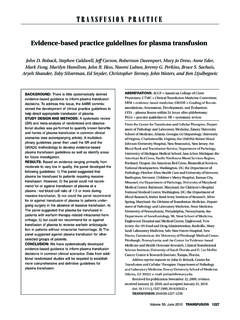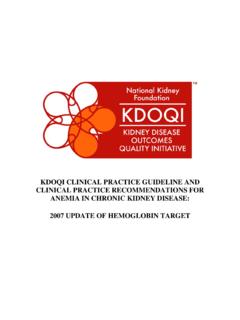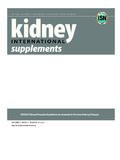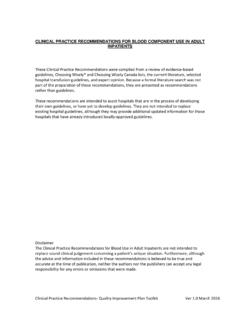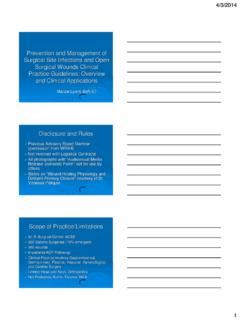Transcription of The Clinical of - WHO
1 TheClinicalUseofBloodinGeneral MedicineObstetricsPaediatricsSurgery & Anaesthesia Trauma & BurnsTheClinicalUseofBloodinMedicineObst etricsPaediatricsSurgery & Anaesthesia Trauma & BurnsContentsPrefaceAcknowledgementsIntr oduction 1 PArt 1: PrIncIPles, Products And Procedures1 the appropriate use of blood and blood products Appropriate and inappropriate transfusion Blood safety Prerequisites for the appropriate Clinical use of blood Principles of Clinical transfusion practice 182 Blood, oxygen and the circulation Body fluids and compartments Blood Oxygen supply to the body 283 Anaemia Definitions Measuring haemoglobin concentration and haematocrit Clinically important anaemia Interpreting haemoglobin values Causes of anaemia Adaptation to anaemia Anaemia due to acute blood loss Anaemia due to chronic blood loss Chronic anaemia due to other causes Principles of the treatment of anaemia Principles of the prevention of anaemia 554 Replacement fluids Definitions Intravenous replacement therapy Intravenous replacement fluids Other routes of administration of fluids Replacement fluids.
2 Characteristics 655 Blood products Definitions Whole blood Blood components Component separation by apheresis Plasma derivative production (plasma fractionation) Blood products: characteristics 826 Clinical transfusion procedures Getting the right blood to the right patient at the right time Ordering blood products Red cell compatibility testing (crossmatching) Collecting blood products prior to transfusion Storing blood products prior to transfusion Administering blood products Monitoring the transfused patient Specialized procedures 1247 Adverse effects of transfusion transfusion reactions Initial management and investigation Acute transfusion reactions Delayed complications of transfusion : transfusion -transmitted infections Other delayed complications of transfusion Massive or large volume blood transfusions 149 PArt 2.
3 transfusion In Clinical PrActIce8 Clinical decisions on transfusion Assessing the need for transfusion Confirming the need for transfusion 1569 General medicine Anaemia Deficiency of haematinics Haemolytic anaemias Malaria HIV/AIDS Glucose-6-phosphate dehydrogenase (G6PD) deficiency Bone marrow failure Genetic disorders of haemoglobin Bleeding disorders and transfusion Congenital bleeding and clotting disorders Acquired bleeding and clotting disorders 20410 obstetrics Physiological & haematological changes during pregnancy Chronic anaemia in pregnancy Major obstetric haemorrhage Haemolytic disease of the newborn (HDN) 22511 Paediatrics & neonatology Paediatric anaemia The management of paediatric anaemia Paediatric transfusion in special Clinical situations Bleeding and clotting disorders Thrombocytopenia Neonatal transfusion 24512 surgery & anaesthesia Patient selection and preparation Techniques to reduce operative blood loss Fluid replacement and transfusion Autologous blood transfusion Care in the postoperative period 27613 trauma & acute surgery Management of the acute surgical or traumatized patient Initial assessment and resuscitation Reassessment Definitive management Other causes of hypovolaemia The management of paediatric patients 29214 Burns The management of burns patients Assessing the severity of burn Fluid resuscitation in burns patients Continuing care
4 Of burns patients Burns prevention 308 PArt 3: PuttIng It Into PrActIce15 Making it happen: what can I do? Where do I start? Developing a plan of action Hospital transfusion committee Guidelines on the Clinical use of blood Education and training on the Clinical use of blood 323 Glossary 325 Index 331 PrefaceBlood transfusion is an essential part of modern health care. Used correctly, it can save life and improve health. However, the transmission of infectious agents by blood and blood products has focused particular attention on the potential risks of transfusion . The World Health Organization (WHO) has developed the following integrated strategy to promote global blood safety and minimize the risks associated with The establishment of nationally coordinated blood transfusion services with quality systems in all The collection of blood only from voluntary non-remunerated donors from low-risk The screening of all donated blood for transfusion -transmissible infections, including the human immunodeficiency virus (HIV)
5 , hepatitis viruses, syphilis and other infectious agents, and good laboratory practice in all aspects of blood grouping, compatibility testing, component preparation and the storage and transportation of blood and blood A reduction in unnecessary transfusions through the appropriate Clinical use of blood and blood products, and the use of simple alternatives to transfusion , wherever countries have established national blood transfusion services in accordance with WHO recommendations and guidelines. However, few countries have yet developed national policies and guidelines on the Clinical use of blood or provide systematic education and training on the Clinical use of blood and blood 1998, WHO published Recommendations on Developing a National Policy and Guidelines on the Clinical Use of Blood.
6 This document was designed to assist Member States in developing and implementing national policies and guidelines and ensuring active collaboration between the blood transfusion service and clinicians throughout the management of patients who may require transfusion . The Recommendations emphasize the importance of education and training in the Clinical use of blood for all Clinical and blood bank staff PREFACE involved in the transfusion process. The WHO team responsible for Blood transfusion Safety (WHO/BTS) has therefore developed The Clinical Use of Blood to provide a set of comprehensive learning materials that can be used in undergraduate and postgraduate programmes, in-service training and continuing medical education programmes or for independent study by individual clinicians and blood transfusion specialists.
7 The pocket handbook that accompanies the module is designed for quick reference when urgent decisions on transfusion are Clinical Use of Blood is not designed to replace conventional textbooks or to provide a definitive text on the Clinical use of blood. Rather, its purpose is to provide an accessible learning tool that will assist prescribers of blood to make appropriate Clinical decisions on transfusion and contribute to wider efforts to minimize the unnecessary use of blood and blood products. The materials have been written by an international team of Clinical and blood transfusion specialists and have been reviewed by a wide range of specialists throughout the world. They have also been reviewed by the WHO Departments of Reproductive Health and Research, Child and Adolescent Health and Development, Management of Non-Communicable Diseases (Human Genetics) and Roll Back Malaria.
8 Nevertheless, Clinical transfusion practice should always be based on national guidelines, where available. Users are therefore encouraged to adapt the information and guidance contained in the module and pocket handbook to conform with national guidelines and established procedures in their own Jean C. EmmanuelDirector, Blood Safety & Clinical TechnologyWorld Health OrganizationAcknowledgementsThe World Health Organization acknowledges with thanks the many Clinical and blood transfusion medicine specialists who have contributed to the development of these learning materials. Project DirectorDr Jean C. Emmanuel, Director, Blood Safety and Clinical Technology, World Health OrganizationProject ManagerMs Jan Fordham, Director, Open Learning Associates, London, UKClinical EditorsDr Jean C.
9 Emmanuel, Director, Blood Safety and Clinical Technology, World Health OrganizationDr Brian McClelland, Regional Director, Edinburgh & South-East Scotland Blood transfusion Service, Edinburgh, UKDr Richard Page, Consultant Anaesthetist, Royal Cornwall Hospitals, UKAuthorsDr Anthony Chisakuta, Consultant Anaesthetist, Royal Belfast Hospital for Children, Belfast, UKDr Eve Lackritz, Assistant Chief for Science, International Activities Branch, Division of HIV/AIDS Prevention, Centers for Disease Control and Prevention, Atlanta, USADr Brian McClelland, Regional Director, Edinburgh & South-East Scotland Blood transfusion Service, Edinburgh, UKDr Richard Page, Consultant Anaesthetist, Royal Cornwall Hospitals, UKDr Henrik Zetterstr m, Medical Director, stersunds Hospital, stersund, SwedenCritical ReadersDr Imelda Bates, Consultant Haematologist, St George s Hospital Medical School, London, UKDr Sunil Bichile, Professor and Head, Department of Haematology, Topiwala National Medical College and BYL Nair Charitable Hospital, Bombay, IndiaDr John Davy, Plastic and Reconstructive Surgeon, Harare, ZimbabweDr Androulla Eleftheriou, Scientific Coordinator, Thalassaemia International FederationDr Elizabeth Letsky, Consultant Perinatal Haematologist, Queen Charlotte s and Chelsea Hospital, London, UKDr S.
10 Mitchell Lewis, Department of Haematology, Imperial College School of Medicine, Hammersmith Hospital, London, UKDr Guy Levy, Zentrallaboratorium, Bern, SwitzerlandDr Laurie Marks, Consultant Anaesthetist, Harare, ZimbabweDr Stephen Munjanja, Obstetrician & Gynaecologist, Harare, ZimbabweProfessor Greg Powell, Department of Paediatrics and Child Health, School of Medicine, University of Zimbabwe, Harare, ZimbabweDra Maria de los Angeles Rodriguez, Head of Blood Bank, Hospital Naval, Vi a del Mar, ChileMr Graham L. Sellars, Obstetrician & Gynaecologist, Harare, ZimbabweACKNOWLEDGEMENTSP articipants in WHO Informal Regional Evaluation, Harare, Zimbabwe11 12 April 1997Dr Henry W. Bukwirwa, Department of Anaesthesia, Makerere Medical School, Mulago Hospital, Kampala, UgandaDr Meena Nathan Cherian, Professor, Department of Anaesthesia, Christian Medical College & Hospital, Vellore, IndiaDr M.










